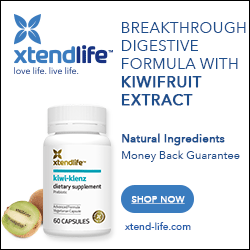Review: Iron Benefits and Risks
Iron is an essential trace mineral that’s involved in oxygen transport, energy production, DNA maintenance/repair and the immune system. It’s absolutely vital to our health and well-being.
Iron is an integral part of “heme“—a complex molecule associated with a variety of proteins. Hemoglobin is one of the most important—it’s the primary protein found in red blood cells and is used to transport oxygen from the lungs to other tissues. Hemoglobin represents 2/3 of the total iron in the body.
Other heme-containing proteins and enzymes include:
- Cytochromes — proteins critical to cellular energy production and electron transport.
- Catalase/Peroxidase — antioxidant enzymes that protect cells from reactive oxygen species (ROS)
- Myoglobin — protein involved in oxygen transport in muscle cells.
There are non-heme, iron-containing proteins as well:
- transferrin/lactoferrin — proteins responsible for iron transport
- Ribonucleotide reductase — enzyme involved in DNA synthesis
- ferritin — protein used for intracellular iron storage
- NADH dehydrogenase/succinate dehydrogenase — enzymes involved in mitochondrial energy production
There are also heme and non-heme forms of dietary iron: heme iron is found in meat, poultry, fish and seafood, while good sources of non-heme iron are spinach, whole grains, legumes and fortified cereals.
Non-heme iron is less bioavailable than heme iron, due to reduced intestinal absorption, competition with other minerals and/or the presence of anti-nutritional factors (such as phytates in grains, tannins in tea or oxalates in leafy greens).
However, absorption of non-heme iron can be improved by consuming it with acidic foods or a source of amino acids (such as small amounts of meat).
The recommended dietary allowances for iron are based on age and gender:
|
Recommended Dietary Allowance for Iron |
|||
| Life Stage | Age | Males | Females |
| Infant | 0–6 months | 0.27mg | 0.27mg |
| Infant | 7–12 months | 11mg | 11mg |
| Children | 1–3 years | 7mg | 7mg |
| Children | 4–8 years | 10mg | 10mg |
| Children | 9–13 years | 8mg | 8mg |
| Adolescent | 14–18 years | 11mg | 15mg |
| Adult | 19–50 years | 8mg | 18mg |
| Adult | >51 years | 8mg | 8mg |
| Pregnancy | all ages | N/A | 27mg |
| Breastfeeding | <18 years | N/A | 10mg |
| Breastfeeding | >19 years | N/A | 9mg |
Adolescent and adult women have higher iron requirements than men, due to menstrual blood loss. Likewise, vegetarians also have higher iron requirements, due to reduced bioavailability of dietary iron (as noted above, non-heme sources contain inhibitors such as phytates and polyphenols). The RDAs for vegetarians should be adjusted to: 14mg/day for men and post-menopausal women; 33mg/day for pre-menopausal women and 26mg/day for adolescent girls.
Symptoms of iron deficiency include:
- fatigue
- decline in work or school performance
- childhood developmental delays
- difficulty maintaining body temperature
- decreased immune function/increased susceptibility to infection
- glossitis (an inflamed tongue)
- pica (eating of non-nutritive substances such as dirt and clay)
Groups at highest risk for iron deficiency are infants/young children, teenagers, pregnant women, and women of childbearing age. Individuals who engage in intense exercise may also be at risk; as are people with conditions that limit iron absorption (i.e., celiac disease, Helicobacter pylori infection, gastric bypass surgery). Nonetheless, iron supplements are generally not recommended in the absence of a diagnosed deficiency.
Why?
If there’s a nutrient that proves it’s possible to have too much of a good thing, then iron would be it…Iron has a dark side too. Excessive amounts can be toxic: overdosing on iron-containing products (such as chewable multivitamins) is a leading cause of poisoning fatalities in young children. In addition, iron is a pro-oxidant that can catalyze the formation of harmful free radicals. And—if that’s not enough—there are several conditions (such as hemochromatosis, thalassemia major) that predispose individuals to “iron overload”—the pathological accumulation of iron in the body.
Even for normal individuals, the line between “enough” and “too much” isn’t that broad.
|
Tolerable Upper Intake Level (UL) For Iron |
|
|
Age Group
|
UL (mg/day)
|
|
Infants 0–12 months
|
from food and formula only.
|
|
Children 1–13 years
|
40
|
|
Adolescents 14–18 years
|
45
|
|
Adults (>19 years)
|
45
|
Thus, it’s important to strike a balance. Anyone considering taking an iron supplement should look to her/his diet first, as this is the best way to ensure an adequate, safe intake of iron, as well as other important nutrients.
References:
- Linus Pauling Institute Micronutrient Information Center: Iron
- National Institutes of Health Office of Dietary Supplements — Dietary Supplement Fact Sheet: Iron


